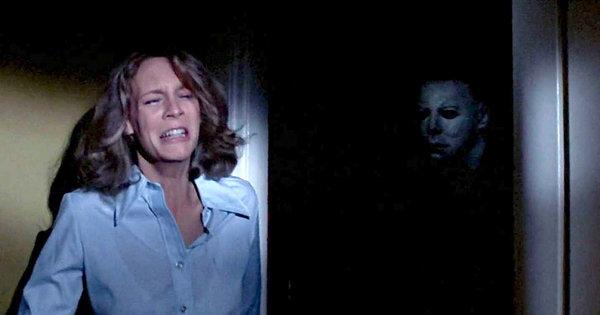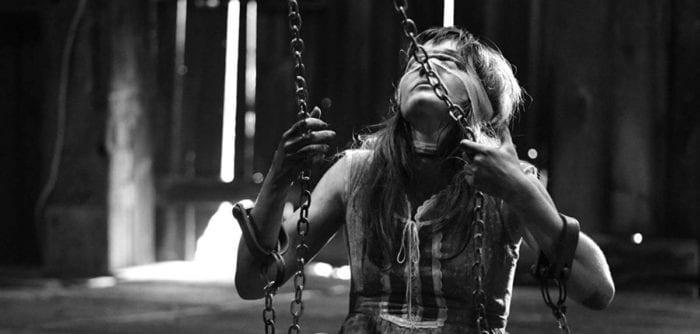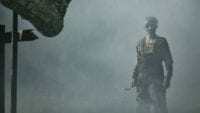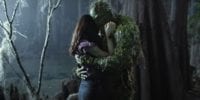Here at 25YLSite, we handle a lot of heavy lifting. Analysis, interpretation, deep discussion, introspective interviews…you name it, we’ve got it. “Favorites” takes a lighter approach to the material we normally cover. Each week, we will take you through a list of favorites—whether it’s moments, scenes, episodes, characters, lines of dialogue, whatever!—in bite-sized articles perfect for your lunch break, a dull commute, or anywhere you need to take a Moment of Zen. So, sit back and enjoy this week’s offering: Matt Armitage’s five favorite creepy horror movies.
Horror movies take many forms, and they can all be great if done well. For me, the best horror movies are those that aren’t overt: they don’t leap out at you, they aren’t blood-drenched slashers, they don’t explain too much too easily. The horror movies that stick with me are the creepy ones. The ones make me feel somewhat uneasy and when they’re over leave a slightly unsettled feeling, make me think about them days later, or question the nature of reality slightly. There is no one form these creepy movies can take: ghost stories, serial killers, supernatural tales. It doesn’t matter. The one thing that ties them together is the unsettled feeling they provoke, and that is something you only know when you feel it. Everybody has different things that make them feel this way, and the films in this list are all examples of different ways of disturbing without going over the top.
Halloween
Everyone knows Halloween, and for the jaded audiences of today it may even seem somewhat simplistic and tame. However, released in 1978 this is one of the templates for modern horror, and whilst also being one of the evil stepfathers of the slasher movie genre, it was, and is, a genuinely creepy movie, focusing on the tension of being stalked and the genuine fear of a seemingly inhuman madman with a knife coming for you for no reason you can understand. John Carpenter, following up on his previous low-budget effort Assault on Precinct 13—another masterclass in suspense—uses his camera like a voyeur, creating a claustrophobic, tense atmosphere from the off, and the score (also by Carpenter, allegedly knocked up in three days) is almost a character in itself, amplifying the tension; gently menacing in places, hinting and making you feel fear even when nothing is visibly happening yet, and then when the on-screen action gets going, crashing in with bigger frightchords to saw at your already frayed nerves.
Viewed from a modern lens, Halloween can definitely seem overly-simplistic, and the tropes it invented have been mercilessly copied and abused, but put aside this lens, and view it—as I did as a child—through a more naive filter, preferably on a ropey VHS copy, and let Carpenter take you on the creepy ride of a lifetime. Just don’t watch it with a girlfriend or whilst drinking, because then you’ll definitely be next.

Don’t Look Now
Nicholas Roeg’s 1973 classic is a creepy horror movie cut from an entirely different cloth. Less a traditional horror, and more of an occult thriller laced with a heavy dose of dream imagery, illusion and an ever-present sense of grief. John (Donald Sutherland) and his wife Laura (Julie Christie) have a young girl who drowns near their home. Later, the grief-stricken couple move to Venice, where John is to restore an old church. A blind woman who claims to be psychic says she can ‘see’ their daughter Christine. After a dinner walking in Venice, John sees a child with a red coat like the one Christine was wearing when she died. Whilst the film builds on the precognitive elements and supernatural, the heart of the film is the couple’s shared grief, and the tricks of the mind that it plays on them.
Told in a fragmented style, the film makes use of symbology and repeating motifs, and whilst rarely scary in a normal sense, somehow the morbid weight of the film, the camera-work, and the helter-skelter arrangement of scenes and imagery brings about a feeling of apprehension, uncertainty, and discordance. As John slowly starts to lose a firm grasp on what is real and what is an illusion, the film likewise descends into a spiral, and somehow takes our minds with it. The truth that John seeks in the foggy crumbling ghost house that is Venice isn’t so important, rather the way that Roeg portrays his descent into chaos. Again and again, John fails to recognize that what he is being shown is real, but glimpses into a different point in time.

The Eyes of My Mother
The debut feature of writer/director Nicolas Pesce is a fusion of high art film—shot in richly contrasted black and white—and gory horror. Pesce however—maybe partly due to budget—whilst making it clear that horrific things are happening, shows little of the violent acts on screen, merely hinting at them and displaying the resulting carnage. The moment itself is shielded from the viewer, which in some ways makes it even more violent. One’s imagination begins to run rampant, filling in the visual gaps as we listen to the off-camera sounds of murder.
Francisca (Kika Magalhães) is raised on a farm by her father and mother (a trained surgeon) and learns at her hands some of her arts, clearly absorbing a somewhat twisted affection for slicing up flesh. The isolation of the farm provides the perfect backdrop for this three-act play about loneliness. Pesce builds a different kind of creepiness by creating surreal ethereal moods and excellently crafted images. We begin to understand that Francisca, whilst appearing placid and lonely, is capable of snapping into horrific acts of violence, which for her is confusingly mingled with a deep desire for love and companionship. She has the naive yet selfish mind of a child who would kill an animal so it will stay with them forever. The focus here is entirely on creating a mood, and for me, it works exceptionally well, having something of the same off-kilter creeping dread as Takashi Miike’s Audition(1999).

Absentia
Not very well known, but possibly my favorite of Mike Flanagan’s feature film outings (his first in fact), Absentia is an ode to grief and loss, and the dark places that emotional suffering can take you. I’ve talked about Absentia in-depth on the site before, but include it here as well because for its small budget it excels at slowly building a mood of existential dread that reaches inside you and has you squinting at shadows. Simultaneously crafting a genuinely touching story of mourning and emotional trauma, Flanagan weaves into this threads of cosmic horror, questioning our understanding of reality and fearing that the solidity of our world is perhaps under doubt, and, that lurking in the shadows in mundane places are passages to another darker place—a place that contains creatures we can’t understand and have no vocabulary to help us describe. The trauma from dealing with the loss of someone close and our inability to grasp that loss is mirrored here by the incomprehension of these underworlds and their denizens, and the effect that has on our sanity. Absentia is slow, deliberately so, and that is part of its success in worming its way into our subconscious.

The Borderlands
A lot of people just walk away from any film with the tag “found-footage” these days after a barrage of fairly awful and formulaic movies seeking the fame and fortune of Blair Witch and Paranormal Activity. Occasionally though, one pops up that manages to rise above the overused tropes of the genre and use it for its strengths, which is to provide a more intimate, first-person view of the horror unfolding on the screen. Set in the West Country in the UK, when a parish priest reports paranormal activity at the local church, a two-man team are sent out to investigate by the Vatican, expecting to find perfectly explainable causes but find something else entirely.
The movie works on several levels, pairing the odd couple of tech wizard Gray (Robin Hill) with Deacon (Gordon Kennedy), a tormented skeptical hard-drinking religious brother, alongside Father Mark Amidon (Aidan McArdle). The developing relationship between the team is delivered well, and the banter invests you in the characters quite successfully, as Writer/Director Elliot Goldner slowly layers on the creeping tension in the small claustrophobic village setting. The film uses sound design to great effect alongside some effective visual effects and camera-work, and whilst towards the end of the film the creepiness veers sharply in an unexpected way into just plain weird, on the whole, The Borderlands is a great example of using the found-footage technique to create an insular unnerved feeling in the viewer, that builds slowly from the outset.

I’ve consciously included a few less well-known horror movies on this list in the hope some of you out there won’t have stumbled across them yet, and I urge you to give them a try. This list could easily have been much much longer, but if you have particular favorites of your own, let us know in the comments!


